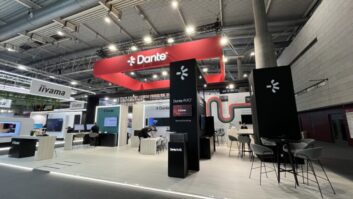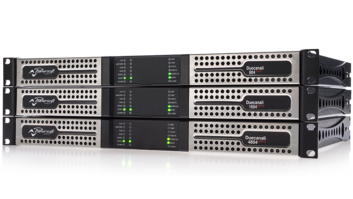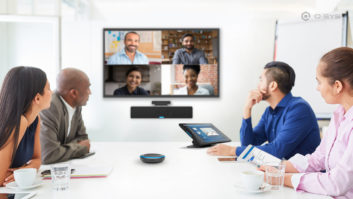
The installed audio market has been familiar with and using networked audio systems for many years, but I feel we’re finally at a tipping point where they’re more the rule than the exception, not just in terms of what’s already out there, but also in terms of what clients and integrators think of first when they begin to consider the right approach for a new project.
It always takes years for big technological changes to take place, in any market. Recording studios first began to hear about digital audio devices in the 1970s, but it was decades before the main parts of the signal chain could be replaced by truly digital mixers, processors and eventually recorders, and it took even longer before most audio pros were confident that they sounded good enough to use and they became widespread.
In the installed audio space, many ISE shows go by with industry pros looking askance at the early adopters of any new technology and the problems they inevitably encounter. Several development cycles often have to elapse before equipment manufacturers make good on their insufficiently well-thought-out first attempts to capitalise on a new technology, and years pass while new industry-wide standards and protocols for a new technology are developed. It then takes yet longer for these to be adopted in a sufficiently widespread fashion to make them worthwhile and usable. The final hurdle to broad-based acceptance is the mental one; just because you can base complex installations on a digital data network, doesn’t mean that customers or integrators automatically will. There has to be a coherent case for switching to a networked approach before they do.
For network-based installations, all of these pieces are now in place. There are many operational advantages to a network-based approach. Networked systems break the link which analogue systems will always have between their point-to-point physical connections to a system and the way the signals are routed: as long as a source is connected to the network somewhere, its routing can be rapidly and flexibly redefined in software without changing the physical connection, and from a remote location too if required. Increasingly, equipment itself can be remotely controlled over a network too, in a way that is usually expensive and complex to implement with analogue systems.
Cost clarity
Moreover, we now have networked audio protocols that don’t require their own bespoke (and thus expensive) hardware, but can operate over standard IT networks, Cat5 cable and Gigabit switches, and can therefore share infrastructure that is likely to be installed at a new project anyway, or is perhaps already in place. As the cost of basing your audio on a network tumbles for reasons like this, the cost of analogue cabling remains high due to the price of copper, which remains historically high, if not at the eye-watering levels of 2010-11. Expanding and/or reconfiguring existing audio networks already based on affordable IT cabling, networks and software now also tends to involve much less of an overhead than adding analogue tie-lines into a new hotel wing or lecture theatre.
Perhaps most persuasively of all, the interconnection protocols are increasingly being included in the basic building blocks required for an audio network. At Shure, we’ve been selling mixers like the SCM820 and wireless microphone systems like ULX-D and Microflex Wireless that have (or can have) audio-over-IP interfaces built in, utilising the Dante protocol, for over two years, and we’re not alone. In addition, established audio processing and routing platforms like QSC’s Q-Sys now have bridging that allows them to take Dante or AVB inputs and incorporate them into their systems, then return the processed audio via the same protocols. So you have IP-based means to capture, route, process and output.
With enough of these pieces in place, forward-thinking integrators are beginning to realise the advantages of the networked approach. In some cases, designing systems in the analogue domain is starting to become the less straightforward choice. If you are putting together a modern audio installation that incorporates audio processing, routing, and monitoring, IP-based technology will almost certainly be in use in parts of the system already. For example, Shure’s wireless microphone systems already use IP technology to constantly monitor parameters like battery life or RF signal strength anyway; so why not carry the system audio over IP as well?
Perhaps this is the reason we’re seeing tremendous uptake in digital networked audio solutions and Dante-enabled equipment, after many years of only slowly accelerating progress. There had to be many small incremental changes before we could say this, but the time for networked audio seems to have come at last.
Duncan Savage is head of the systems group at Shure Distribution UK.







